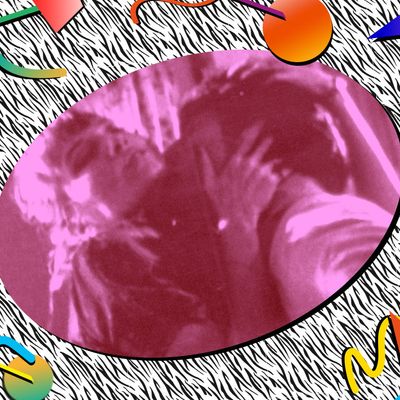
All week on Vulture, we’re examining ‘80s pop culture, and how it lives on today.
Picture a movie sex scene — not one in particular, but the archetypal notion of one. Does it involve a tastefully topless actress throwing her head back in ecstasy as our leading man nibbles down the length of her neck? Is the romp shot in slow-mo and bathed in cool blue light, our actors’ hair backlit like golden halos? And is there a sensitive plinking of piano on the soundtrack to signify tender lovemaking, or, if the fucking’s real good, a wailing saxophone?
If so, the 1980s did a number on you … and, it must be said, everybody else. As the last film decade before celebrity skin became easily search-indexed online, the 1980s offered love scenes galore in just about every type of genre. And while a loosening of film standards meant that sex and nudity had become almost commonplace in the 1960s and 1970s, the 1980s codified how a sex scene ought to look in ways that continue to filter down into modern-day movies and the sexually explicit world of premium cable.
Think of Tom Cruise and Kelly McGillis, who interrupt the macho theatrics of Top Gun to start Frenching to “Take My Breath Away.” Shot like silhouettes and backlit by blue moonlight, they hook up in front of billowing bedroom curtains that undulate along with the stars’ heaving bodies. (In the 1980s, there was always something billowing.) It might as well be a music-video set, which was one of the primary, lasting innovations of the 1980s sex scene: As MTV and pornography both became booming businesses, movies found a way to fuse the tropes of both.
At the time, the sex scenes in films like 9 1/2 Weeks and Risky Business were derided as over-the-top bouts of stylization. Did anyone truly make love like that, artfully choreographing each move in mood lighting pitched just so? But as those iconic scenes claimed more and more pop cultural real estate, they became not the exception to the rule but the de facto template for onscreen sex to come. Watch the sex scenes from 1984’s The Terminator and 2015’s Fifty Shades of Grey back to back, for example, and you might be surprised by how much they have in common — from the lighting to the choreography to the similar indications of orgasmic pleasure — despite being two very different movies made 30 years apart.
How has that awfully specific rubric lasted so long? Don’t credit the big screen for it: Since the 1990s, major movies have been almost literally denuded of their sex scenes, with Fifty Shades of Grey standing as both a notable exception and an homage to a bygone era. (It’s telling that The Terminator stops in its tracks for a scene of gentle lovemaking, while 2015’s Terminator Genisys keeps the same characters so far apart, you’d think they were chaperoned.) But into that vacuum came television, where the format of the 1980s sex scene persisted and even flourished. NYPD Blue broke network-television barriers with fantasy-lit sex scenes that were at odds with the cop drama’s usual grit, and on premium cable, late-night Skinemax entries tried to peddle soft porn with tricks learned from ‘80s directors like Tony Scott and Adrian Lyne. True Blood’s frequent sex scenes wouldn’t have looked out of place a few decades earlier, and if you tune into the latest sex-and-violence drama on Starz or Showtime, the lovemaking might feel a little familiar.
So while naturalistic bouts of sex, like the hungry assignations in Blue Is the Warmest Color, might sometimes find fanfare, it’s fair to say that the more stylized hallmarks of the 1980s sex scene are here to stay, now permanently embedded in our cultural consciousness as the ideal notion of how screen lovemaking ought to look. Allow me to craft my own homage, then: Instead of ending this article on a sharp observation or humorous quote, I’ll simply pan away, land on a bedside table, and fade out.


